Thank God, they are extinct! 25 awful creatures who once inhabited Earth
Categories: Animals
By Pictolic https://pictolic.com/article/thank-god-they-are-extinct-25-awful-creatures-who-once-inhabited-earth.htmlWe often hear that now, more and more species become extinct or are on the verge of extinction, and their extinction is only a matter of time. Hunting, destruction of natural habitats, climate change and other factors have led to the fact that the rate of loss of species at 1000 times the speed of recovery of the natural background. Although the extinction of animals is always sad, sometimes for us humans, it can even be profitable.
From melasma to 12 meters in length the flying creatures the size of a giraffe — look at the list of 25 animals, the neighborhood that you would not be happy.
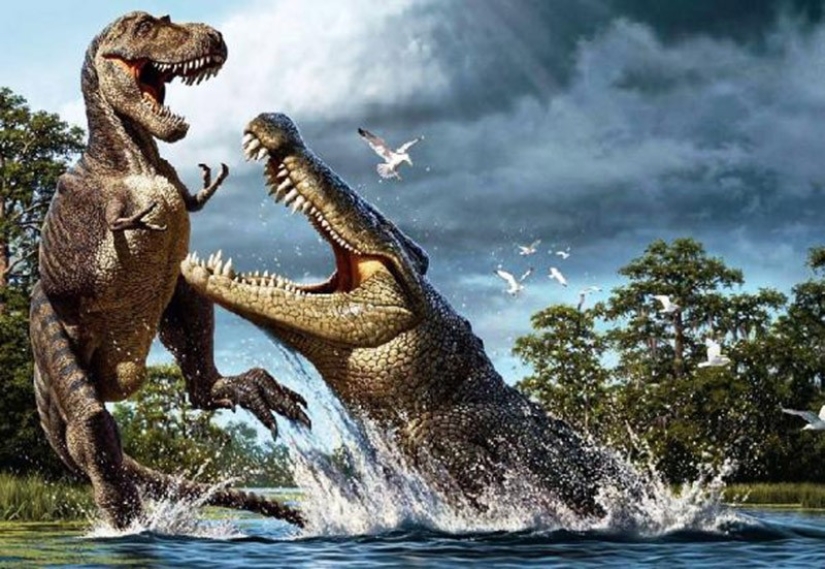
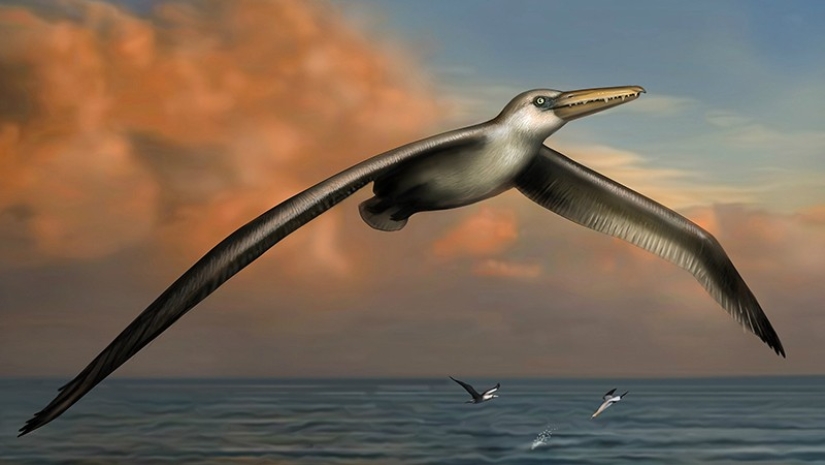
Pelagornis Sandersi
By wingspan, which was about 7 meters, bird Pelargonis Sandersi, obviously, was the largest flying bird that ever existed on Earth. Looks like she could fly, just pushed off from the rock, and the greater part of his life spent over the ocean, relying on the wind rising from the ocean to stay afloat. Although compared with the pterosaurs, the wingspan of which was almost 12 meters, this bird was still quite "moderate" in size.
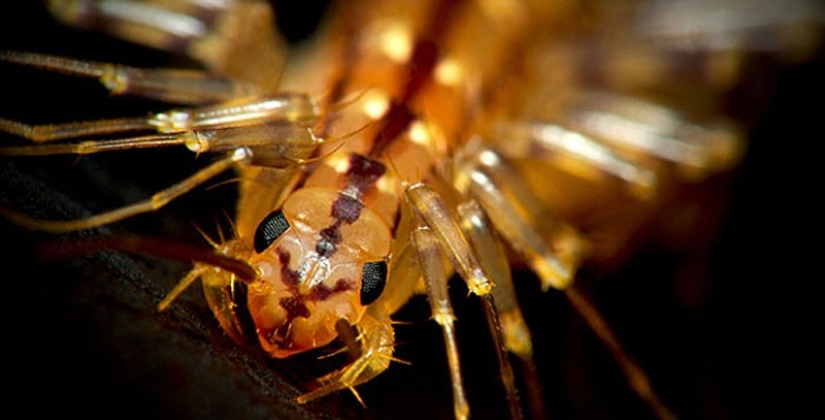
Euphoberia
Similar to the modern millipedes in form and behavior, Euphoberia still had one significant difference — it was more than 90 cm in length! Although scientists are not quite sure what exactly she was fed, we know that some modern millipedes feed on birds, snakes and bats. If a 25-centimeter centipede could hunt birds, imagine who could hunt almost a meter!

Gigantopithecus
Gigantopithecus lived in the period from 9 million to 100,000 years ago in modern Asia. It was the biggest monkey on Earth. It is believed that this creature up to 3 meters and weighing up to 540 kg went on four legs, like gorillas and chimpanzees, but some believe they could walk on two legs, like humans. The properties of their teeth and jaws suggest that these animals were able to chew coarse fibrous food by cutting into it and grinding.
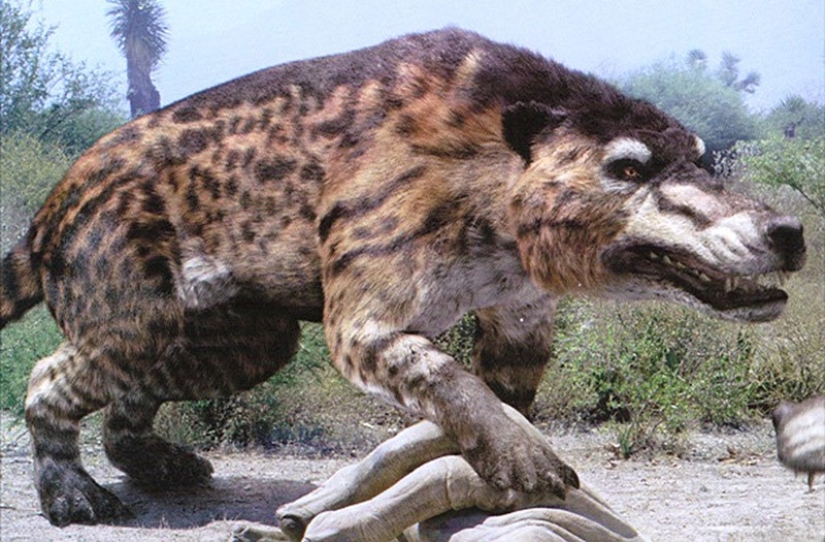
Andrzej
This adorable lived in the Eocene epoch, about 45 and 30 million years ago. Andrzej was a huge carnivorous mammal. Considering found a skull and some bones that paleontologists suggest that this predator could weigh up to 1800 kg, making it the largest land mammal predator in history. However, the feeding behaviour of this animal is not entirely clear, and some theories suggest that indrasari could be even omnivores or scavengers.
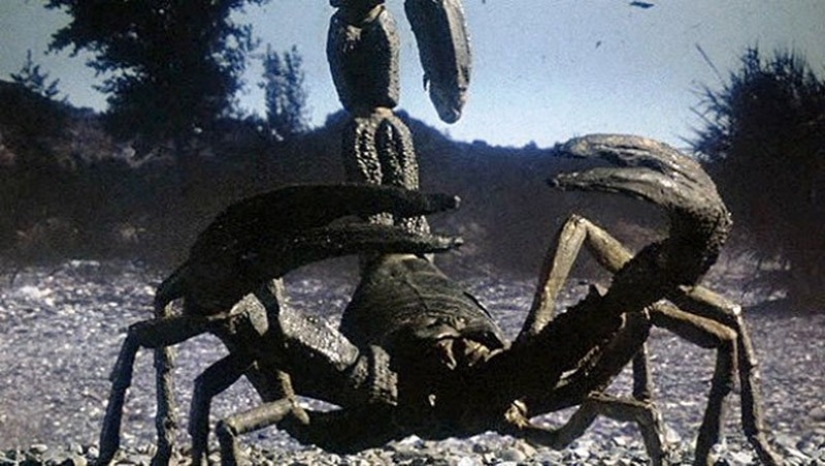
Pulmonoscorpius
The scientific name of this creature translates as "breathing Scorpion". He lived in the visean period (approx. 345-330 million years ago) of the Carboniferous period. Relying on fossil found in Scotland, scientists believe that this species reached 76 cm in length. He lived on land and ate probably small arthropods.
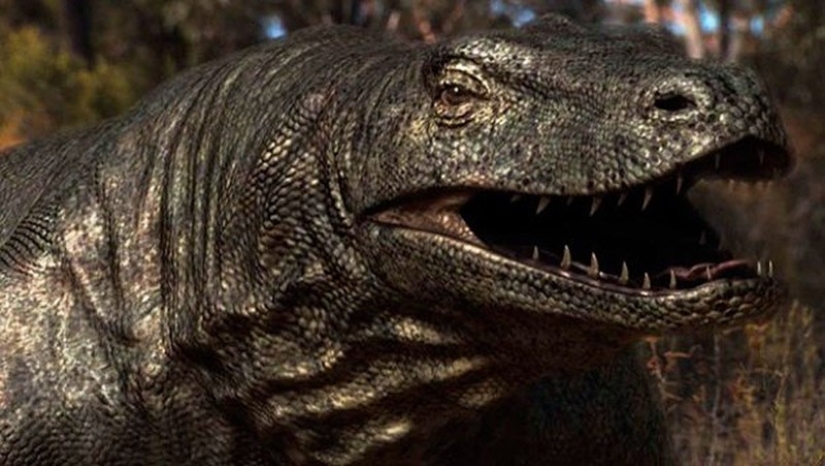
Megalania
Megalania lived in South Australia. It was a huge lizard, who became extinct about 30,000 years ago, and this means that the first aborigines of Australia are quite able to meet her. Scientists disagree about the size of this lizard — maybe she's reached 7 meters in length, which makes megalania the largest terrestrial lizard in history.
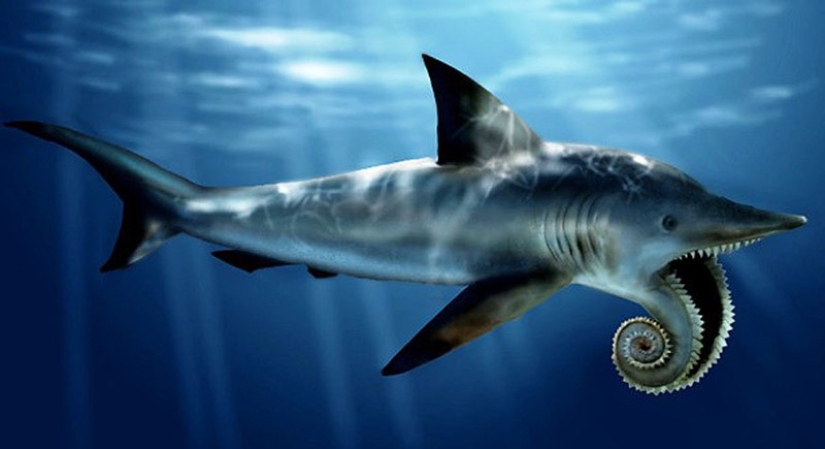
Helicoprion
One of the prehistoric centenarians (310-250 million years ago) — helicoprion — is a genus of extinct coloradobig creatures with interesting jaw. Reached 4 m in length, but its closest living relatives — hyperoartia — you can reach 1.5 m in length.
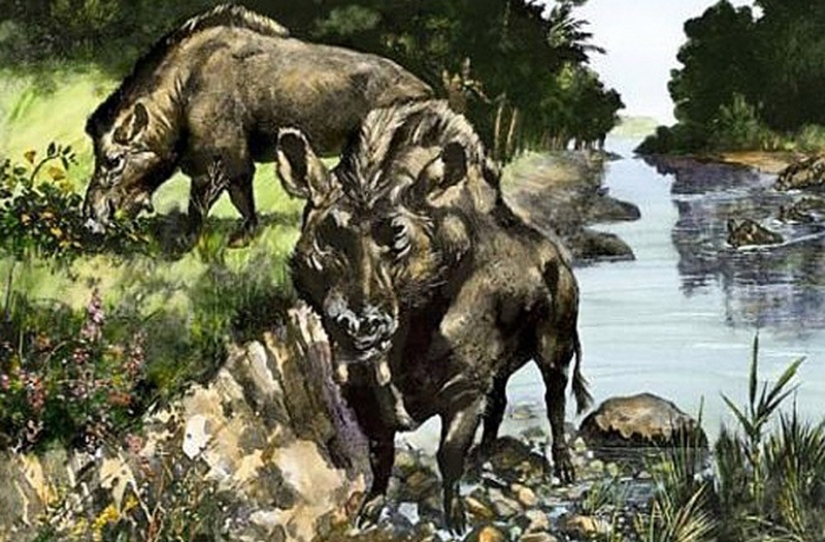
Entelodon
Unlike its modern relatives, entelodon was a similar to boars mammals with a special gourmet eat meat. Probably one of the most dreadful creatures in history, entelodon walked on four legs and was almost human growth. Some scientists believe that even entelodon were cannibals. Well, if they eat each other, I think they wouldn't want to enjoy chelovechinki?
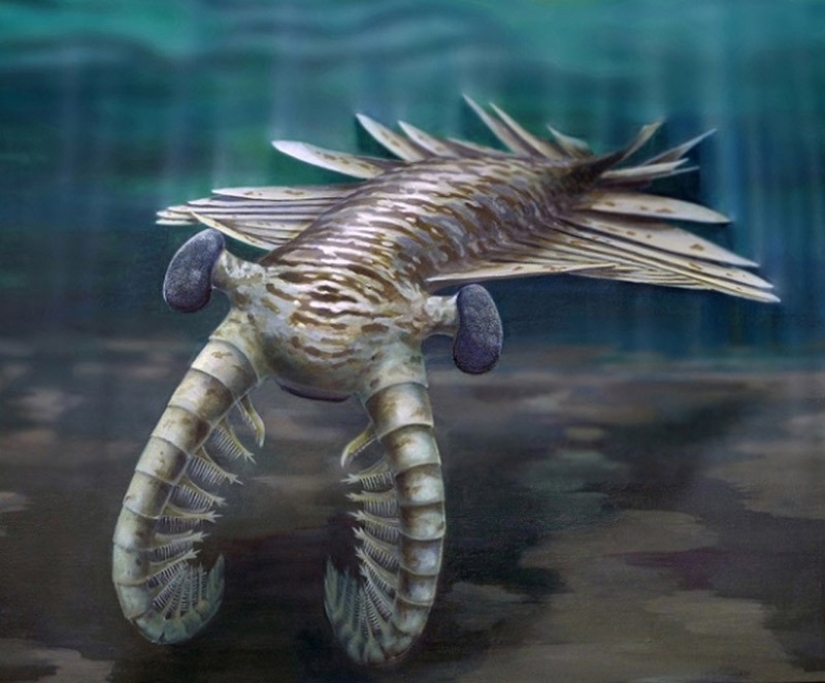
Anomalocaris
Probably dwelt in all the seas of the Cambrian period. Translated, its name means "abnormal shrimp". This genus of marine animals, the close relatives of the arthropods. Scientists believe that it hunted solid marine animals, including trilobites. They had unique eyes with 30,000 lenses — it is believed that it was one of the most advanced eyes in the history of the species.
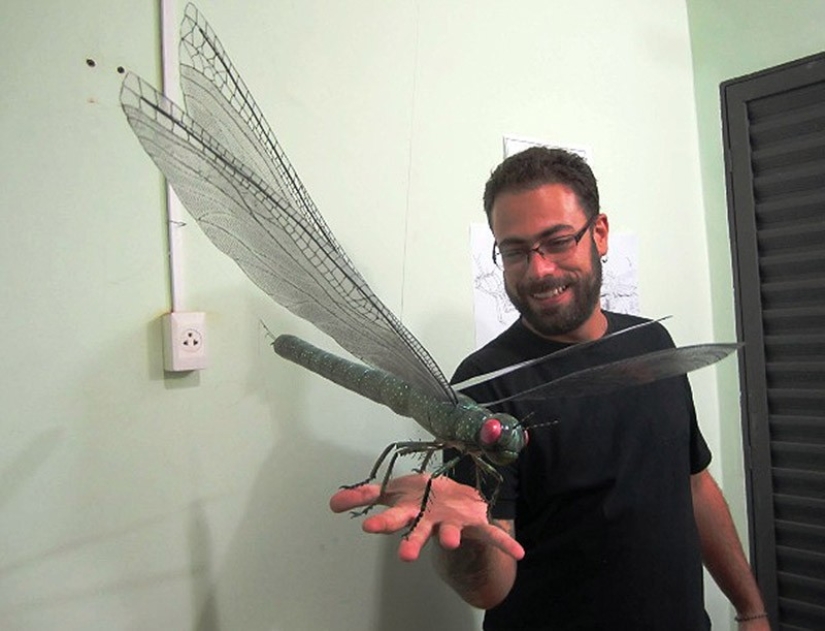
Meganeura
Meganeura is a genus of extinct insects from the Carboniferous period. Reminiscent of a modern dragonflies (and is related to them). With a wingspan of up to 66 cm is one of the largest flying insects in the history of our planet. Meganeura was a predator and its diet consisted mainly of other insects and small amphibians.
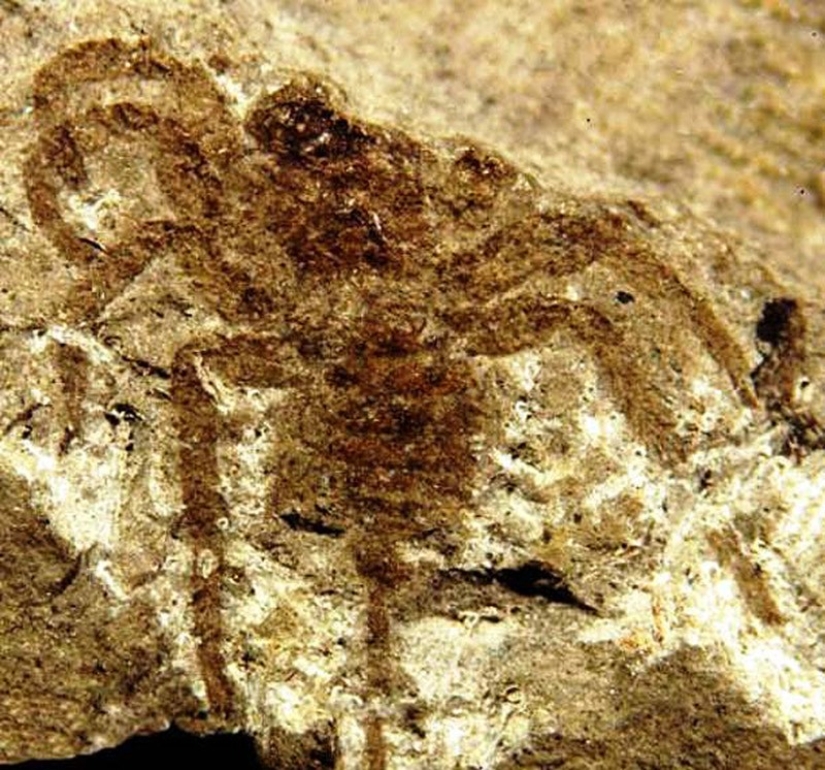
Attercopus
Attercopus was originally spider-like animal with a tail similar to skorpioni. For a long time Attercopus was considered by the prehistoric ancestors of modern spiders, but scientists who discovered his traces, soon came to a different opinion. Hardly Attercopus weaving webs, although perhaps used it to wrap eggs, to postpone corespun thread or in the construction of the walls of his hole.

Danesh
Dansuk — extinct relative of modern crocodiles alligators living 80-73 million years ago. Although he was bigger than any of the modern, he looked almost the same. At length he reached 12 meters and had large sharp teeth that can kill and eat sea turtles, fish and even large dinosaurs.
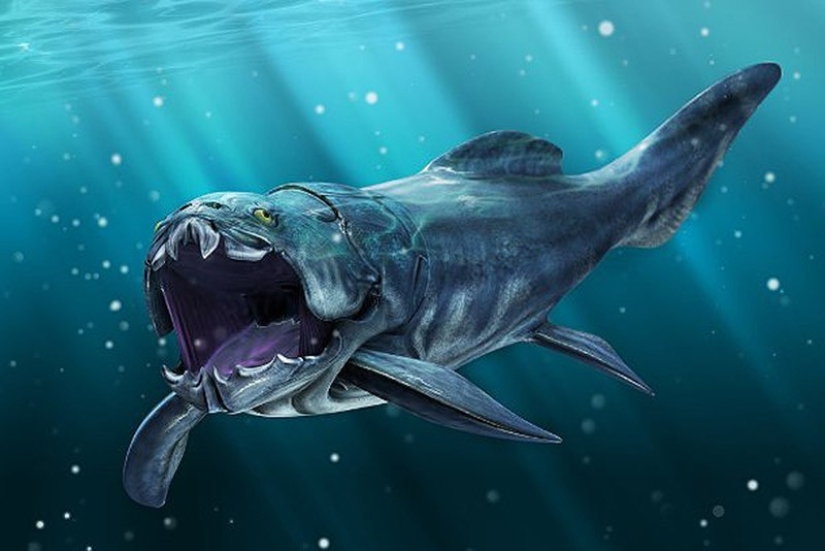
Dunkleosteus
Who lived in the late Devonian period, about 380-360 million years ago dunkleosteus was a huge superheroe fish. Thanks to its terrifying size (up to 10 m in length and weighing almost 4 tonnes), it was the top predator of its time. This fish had strong armour, where it was relatively slow, but very powerful swimmer.
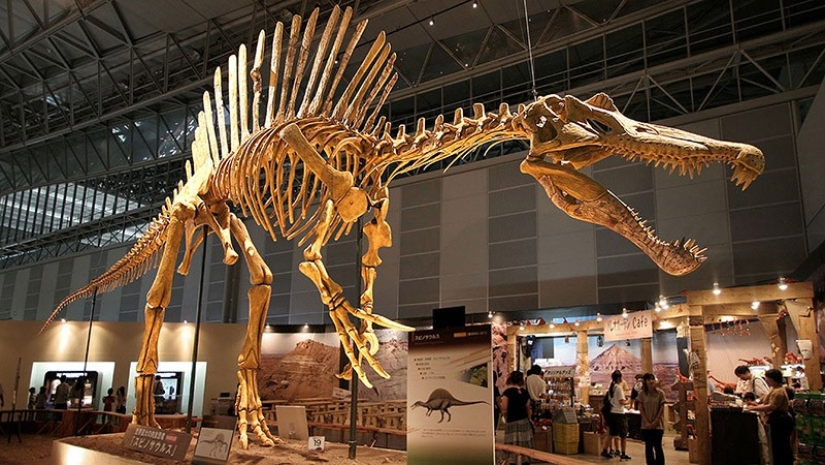
Spinosaurus
Spinosaurus bigger than Tyrannosaurus Rex is the largest carnivore dinosaur of all time. It was 18 m in length and weighed up to 10 tons. They ate tons of fish, turtles and even other dinosaurs. If this horror is alive today, we probably would not be living.
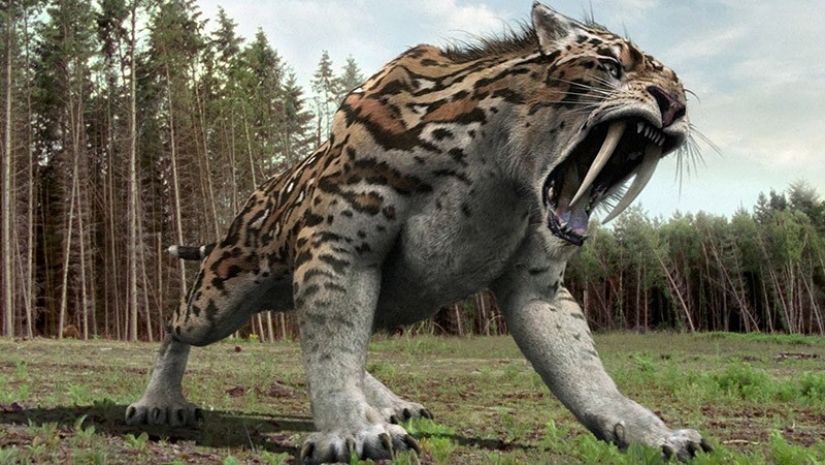
Smilodon
Smilodon lived on the territory of North and South America during the Pleistocene (2.5 million — 10,000 years ago). This is the best example of a saber-toothed cats. Great predator with a particularly well-developed forelimbs and incredibly long, pointed teeth. The largest species could weigh up to 408 kg.
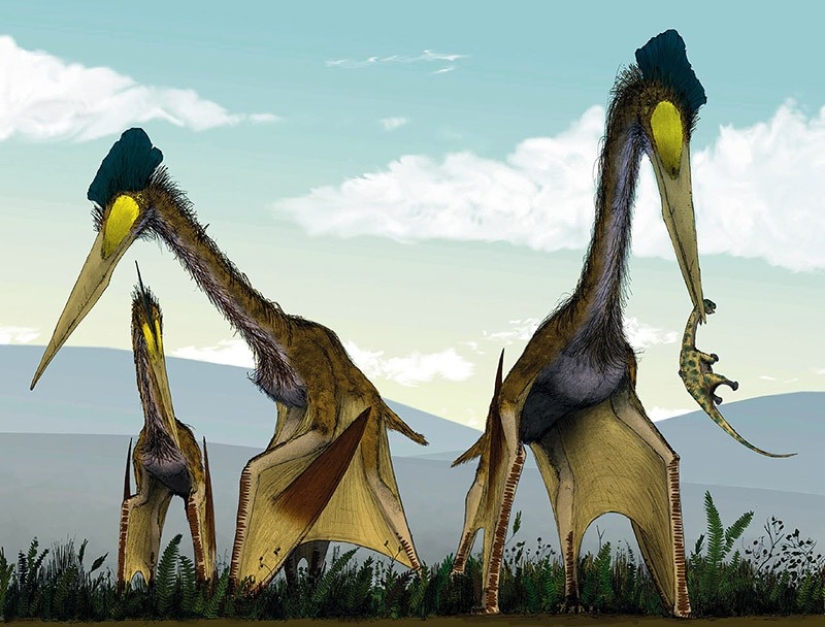
Quetzalcoatl
The wingspan of these creatures could reach a staggering 12 meters. This pterosaur was the largest ever flying creature, including modern birds. However, to estimate the size and weight of these large animals is very difficult, because none of the existing animal has the same body structure, so that the published results vary widely. One of the characteristics of these animals was that they all had an unusually long and hard neck.
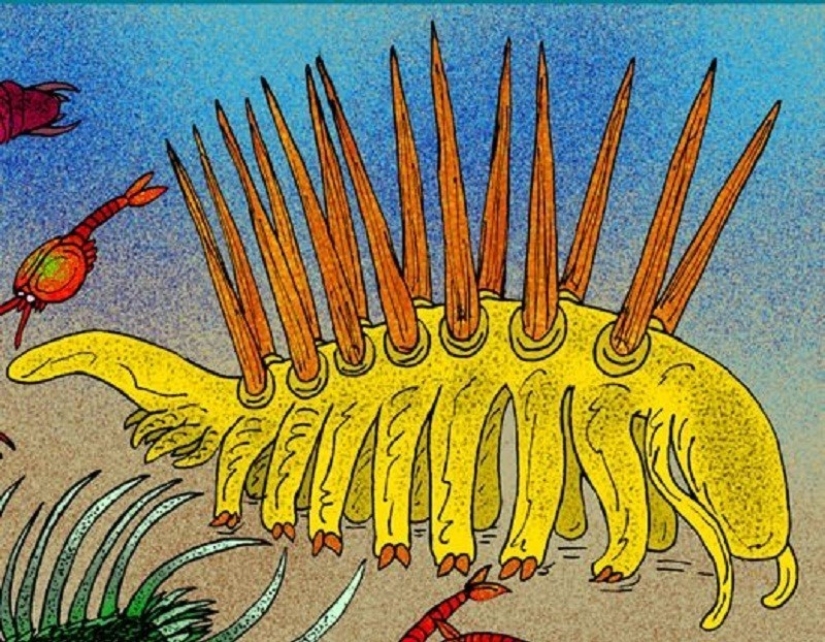
Hallucigenia
The name comes from the idea that these beings are very strange, almost like a hallucination. These worm-like creatures were in the 0.5–3 cm in length, and on his head they didn't have some sensory organs such as eyes and nose. Instead, hallucigenia had seven tentacles on each side of the body, as well as three pairs of tentacles behind them. To say that this is a strange creature — think of nothing to say.
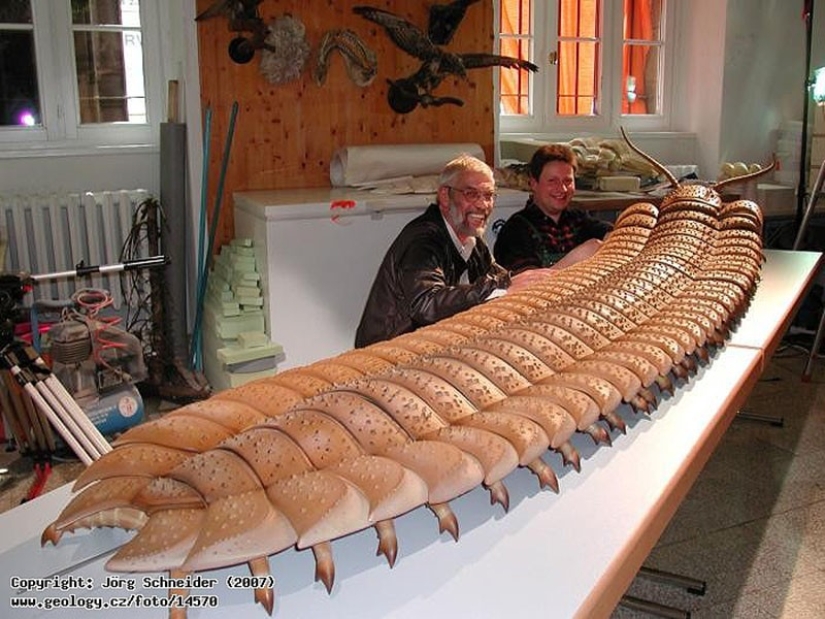
Arthropleura
A resident of the upper Carboniferous period (340-280 million years ago). Lived on the territory of modern North America and Scotland. It was the largest land invertebrate in history. Despite its great length almost to 2.7 meters, arthropleura were not predators, they eat rotting forest plants.
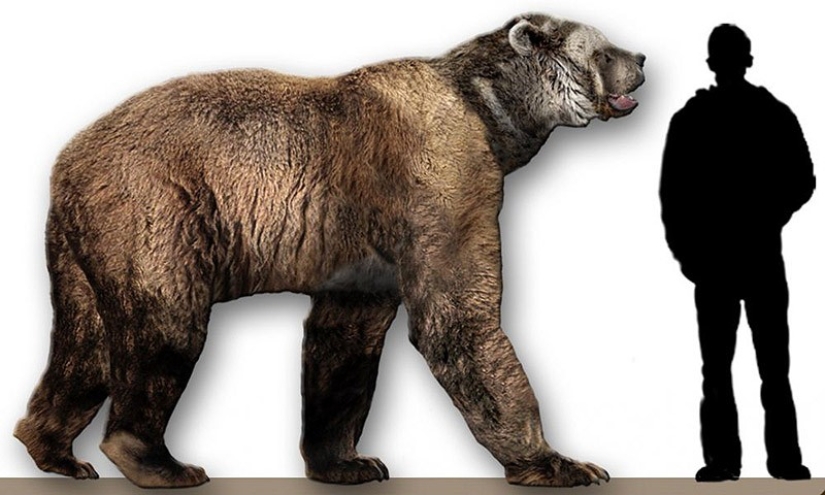
Short faced bear
Short faced bear is an extinct species of bear that lived in North America during the Pleistocene until 11,000 years ago, making it the "most recent" extinct creature in our list. However it truly prehistoric. Standing on two hind legs, the bear reached 3.6 m in height and 4.2 metres, if raised front paw up. It is believed that these giants weighed more than 1360 kg.

Megalodon
The name of this toothy monster translated as "big tooth". This extinct form of a giant shark that lived about 28-1. 5 million years ago. Thanks to its incredible length of 18 meters, it is one of the largest and most powerful predators to have ever lived on Earth. Lived practically all over the world and looked like a larger, more terrifying version of a modern great white shark.

Titanoboa
Who lived about 60-58 million years ago during the Paleocene, titanoboa was the largest, longest and heaviest snake in history. Scientists believe that the individual members of the species reached 12 meters in length and weighed about 1133 kg. Their diet consisted of giant crocodiles and turtles, with which they shared the territory of modern South America.
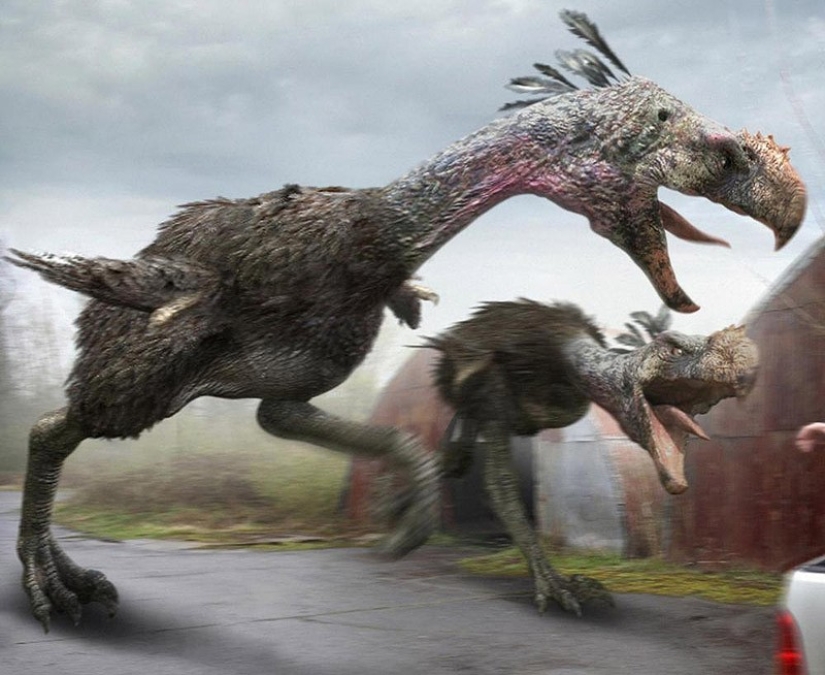
Forgacova
Also called "terrible birds", these prehistoric creatures are extinct native to large predatory birds that were the largest species in South America during the Cenozoic period, approximately 60 million years ago. The largest flightless bird of prey that ever roamed the Earth. Reached 3 meters in height, weigh up to half a ton and presumably could run as fast as a Cheetah.
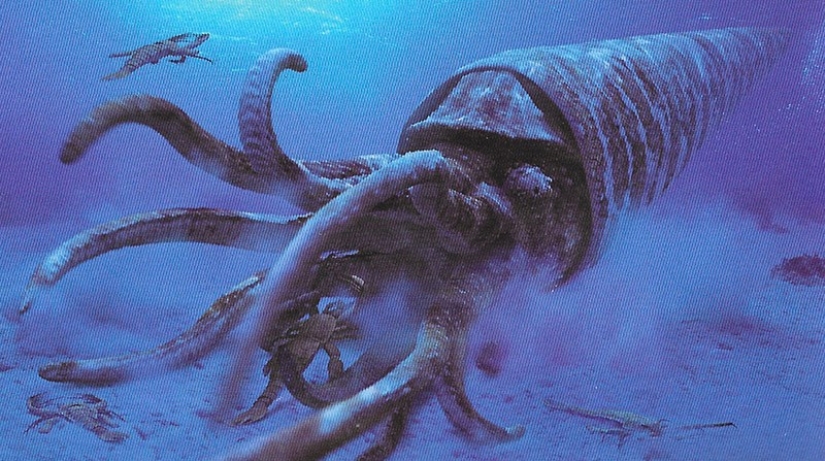
Cameroceras
Lived in the Ordovician period 470-460 million years ago. This is a giant ancestor of modern squid and octopus. The most characteristic feature of this mollusk was a huge cone-shaped shell and tentacles, which he used to catch fish and other marine life. It is believed that the size of the shell ranged from 6 to 12 meters.
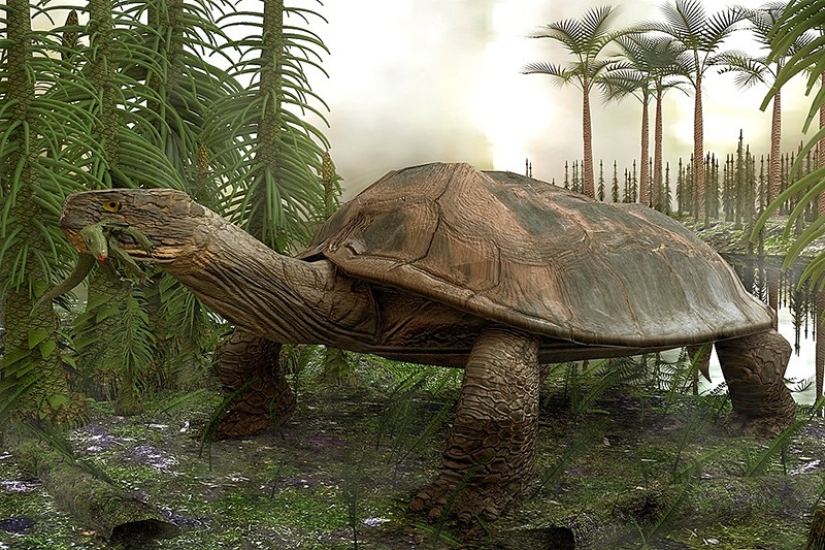
Carbonemys
Carbonemys is an extinct genus of huge turtles that lived about 60 million years ago, i.e. they survived the mass extinction of the dinosaurs. Fossil found in Colombia, suggests that they had a carapace, which reached almost 1.8 meters. The turtles were carnivorous, with huge jaws powerful enough to eat large animals, such as crocodiles.
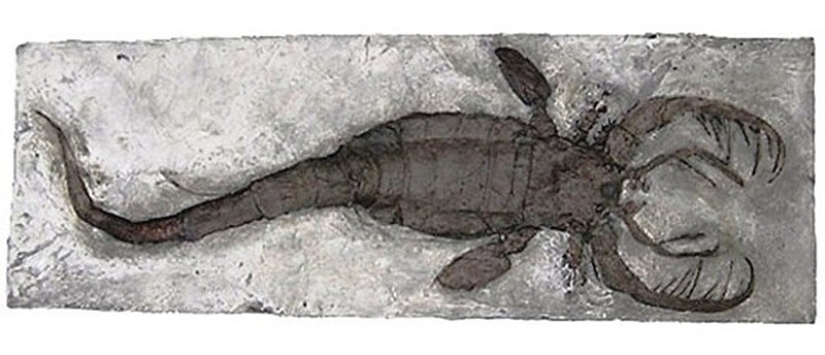
Jaekelopterus
Jaekelopterus, without a doubt, can be called one of the largest arthropod in the world — its length up to 2.5 meters. Sometimes called "sea Scorpion", but actually it has more to Omarov, living in freshwater lakes and rivers of contemporary Western Europe. This horrible creature lived about 390 million years ago, before most of the dinosaurs.
Keywords: The land | The animals
Post News ArticleRecent articles

Winter is a special time of the year, someone is afraid of her, someone is waiting for snow days to build a snowman or go down the ...

The heroes of their photos are used to humiliate others, cheerfully and carelessly shoot everything on the phone and post the ...
Related articles

In the near future, lions, elephants and hippos can be seen only in zoos and disney cartoons. Such a disappointing conclusion can ...

Announced the winners of the Nature World Photography Awards this year. The best picture was called the work of canadian ...

Every day, photographers around the world are looking for new ways to tell stories or capture something we haven't noticed ...